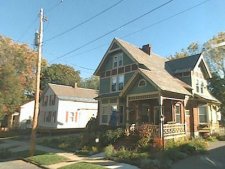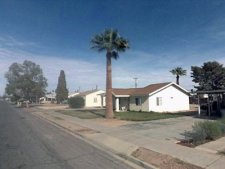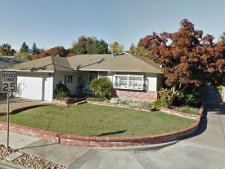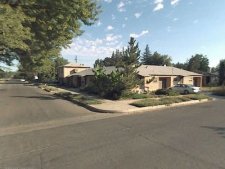National home prices are expected to climb 0.3 percent in the next year, according to the latest home price report by Fiserv Case-Shiller. But over the next five years, home prices are projected to rise 3.3 percent.
We drew on Fiserv Case-Shiller data to identify the best housing markets for the next five years. The top 15 cities are ranked by the projected annualized change in home prices between Q2 2012 and Q2 2017. We also included the median home price, median household income, unemployment rate, and the change in home prices since their peak to offer a broader view of the local economy and housing market.
Note: The median family income is for Q1 2012, home price data is for Q2 2012. Unemployment data is as of August 2012, and population data is for 2011.
Glens Falls, New York
Annualized expected growth from 2012 - 2017: 7.7 percent
Home prices have declined 7.8 percent in Glen Falls since they peaked in Q4 2008. The median home price is $159,000 which is lower than the national median of $181,000.
Glen Falls has a population of 128,996, an unemployment rate of 9.1 percent, and a median family income of $64,300.
Yuma, Arizona
Annualized expected growth from 2012 - 2017: 7.7 percent
Home prices have fallen 37.1 percent in Yuma since their Q4 2006 peak.
It has a population of 200,870, an unemployment rate of 25.8 percent, and a median family income of $45,400, lower than the national median of $62,900.
Eugene-Springfield, Oregon
Annualized expected growth from 2012 - 2017: 7.7 percent
Eugene-Springfield home prices have decreased 22.9 percent since their Q2 2007 peak. The metro has a population of 353,416, an unemployment rate of 8.8 percent, and a median family income of $53,200.
Yakima, Washington
Annualized expected growth from 2012 - 2017: 7.8 percent
Home prices in Yakima are down 8.1 percent since their Q1 2009 peak. It has a median home price of $168,800.
Yakima also has a population of 247,141, an unemployment rate of 10.2 percent, and a median family income of $47,800.
Brunswick, Georgia
Annualized expected growth from 2012 - 2017: 7.9 percent
Home prices in Brunswick have tumbled 32.3 percent since their Q4 2007 peak.
It has a population of 112,923, an unemployment rate of 10.4 percent, and a median family income of $50,500, that is below the national median.
Tucson, Arizona
Annualized expected growth from 2012 - 2017: 7.9 percent
Tucson's home prices have plunged 42.6 percent since their Q1 2006 peak, and it has median home price of $153,000.
It also has a population of 989,569, a median family income of $57,400, and an unemployment rate of 7.5 percent.
Gulfport-Biloxi, Mississippi
Annualized expected growth from 2012 - 2017: 8.0 percent
Home prices in the Gulfport-Biloxi metro area have slipped 20.4 percent since their Q4 2007 peak, and the metro has a median home price of $101,000.
It has a population of 253,511, an unemployment rate of 8.4 percent and a median household income of $52,700.
Napa, California
Annualized expected growth from 2012 - 2017: 8.0 percent
Home prices in Napa have plunged 50.1 percent since they peaked in Q1 2006, and the city has a median home price of $342,000.
Napa has a population of 138,088, an unemployment rate of 8.1 percent, and a median family income of $77,700 above the national median.
Ocala, Florida
Annualized expected growth from 2012 - 2017: 8.0 percent
Home prices in Ocala are down 49.1 percent from their Q3 2006 peak.
But Ocala has a high unemployment rate of 10.1 percent, a median family income of $44,600, well below the national median of $62,900, and a median home price of $105,000.
Santa Barbara-Santa Maria-Goleta, California
Annualized expected growth from 2012 - 2017: 8.4 percent
The Santa Barbara-Santa Maria-Goleta metro area has a population of 426,878, a median family income of $69,000, and an unemployment rate of 8.1 percent.
Home prices are down 52 percent from their Q3 2006 peak, and the metro has a median home price of $290,000.
Sebastian-Vero Beach, Florida
Annualized expected growth from 2012 - 2017: 8.7 percent
Sebastian-Vero Beach home prices have fallen 50.9 percent since their Q4 2005 peak.
The metro has an unemployment rate of 10.6 percent, and a median family income of $58,600, while the median cost of a home is $150,000.
Madera-Chowchilla, California
Annualized expected growth from 2012 - 2017: 8.8 percent
Home prices in the Madera-Chowchilla metro area have fallen 54 percent since their peak in the third quarter of 2006.
At 14.2 percent, the unemployment rate is much higher than the national average of 8.1. The metro has a population of 152,925 and a low median family income of $52,700.
Santa Fe, New Mexico
Annualized expected growth from 2012 - 2017: 8.9 percent
Santa Fe's home prices have fallen 21.7 percent from their Q4 2007 peak. The city has a population of 145,648, an unemployment rate of 5.4 percent below the national average, and a median household income of $59,600, below the national median of $62,900.
Panama City-Lynn Haven-Panama City Beach, Florida
Annualized expected growth from 2012 - 2017: 9.5 percent
Home prices in the Panama City-Lynn Haven-Panama City Beach metro area have fallen 45.3 percent since their Q1 2006 peak. It now has a median home price of $137,000.
The metro has a population of 169,856, an unemployment rate of 8.8 percent, and a median family income of $56,300.
Medford, Oregon
Annualized expected growth from 2012 - 2017: 11.2 percent
Medford's home prices have fallen 39.8 percent since their peak in Q2 2006. The metro has a population of 204,822 and median family income of $49,600.
At 10.8 percent Medford's unemployment rate is higher than the national average.
We drew on Fiserv Case-Shiller data to identify the best housing markets for the next five years. The top 15 cities are ranked by the projected annualized change in home prices between Q2 2012 and Q2 2017. We also included the median home price, median household income, unemployment rate, and the change in home prices since their peak to offer a broader view of the local economy and housing market.
Note: The median family income is for Q1 2012, home price data is for Q2 2012. Unemployment data is as of August 2012, and population data is for 2011.
Glens Falls, New York
Annualized expected growth from 2012 - 2017: 7.7 percent
Home prices have declined 7.8 percent in Glen Falls since they peaked in Q4 2008. The median home price is $159,000 which is lower than the national median of $181,000.
Glen Falls has a population of 128,996, an unemployment rate of 9.1 percent, and a median family income of $64,300.
Yuma, Arizona
Annualized expected growth from 2012 - 2017: 7.7 percent
Home prices have fallen 37.1 percent in Yuma since their Q4 2006 peak.
It has a population of 200,870, an unemployment rate of 25.8 percent, and a median family income of $45,400, lower than the national median of $62,900.
Eugene-Springfield, Oregon
Annualized expected growth from 2012 - 2017: 7.7 percent
Eugene-Springfield home prices have decreased 22.9 percent since their Q2 2007 peak. The metro has a population of 353,416, an unemployment rate of 8.8 percent, and a median family income of $53,200.
Yakima, Washington
Annualized expected growth from 2012 - 2017: 7.8 percent
Home prices in Yakima are down 8.1 percent since their Q1 2009 peak. It has a median home price of $168,800.
Yakima also has a population of 247,141, an unemployment rate of 10.2 percent, and a median family income of $47,800.
Brunswick, Georgia
Annualized expected growth from 2012 - 2017: 7.9 percent
Home prices in Brunswick have tumbled 32.3 percent since their Q4 2007 peak.
It has a population of 112,923, an unemployment rate of 10.4 percent, and a median family income of $50,500, that is below the national median.
Tucson, Arizona
Annualized expected growth from 2012 - 2017: 7.9 percent
Tucson's home prices have plunged 42.6 percent since their Q1 2006 peak, and it has median home price of $153,000.
It also has a population of 989,569, a median family income of $57,400, and an unemployment rate of 7.5 percent.
Gulfport-Biloxi, Mississippi
Annualized expected growth from 2012 - 2017: 8.0 percent
Home prices in the Gulfport-Biloxi metro area have slipped 20.4 percent since their Q4 2007 peak, and the metro has a median home price of $101,000.
It has a population of 253,511, an unemployment rate of 8.4 percent and a median household income of $52,700.
Napa, California
Annualized expected growth from 2012 - 2017: 8.0 percent
Home prices in Napa have plunged 50.1 percent since they peaked in Q1 2006, and the city has a median home price of $342,000.
Napa has a population of 138,088, an unemployment rate of 8.1 percent, and a median family income of $77,700 above the national median.
Ocala, Florida
Annualized expected growth from 2012 - 2017: 8.0 percent
Home prices in Ocala are down 49.1 percent from their Q3 2006 peak.
But Ocala has a high unemployment rate of 10.1 percent, a median family income of $44,600, well below the national median of $62,900, and a median home price of $105,000.
Santa Barbara-Santa Maria-Goleta, California
Annualized expected growth from 2012 - 2017: 8.4 percent
The Santa Barbara-Santa Maria-Goleta metro area has a population of 426,878, a median family income of $69,000, and an unemployment rate of 8.1 percent.
Home prices are down 52 percent from their Q3 2006 peak, and the metro has a median home price of $290,000.
Sebastian-Vero Beach, Florida
Annualized expected growth from 2012 - 2017: 8.7 percent
Sebastian-Vero Beach home prices have fallen 50.9 percent since their Q4 2005 peak.
The metro has an unemployment rate of 10.6 percent, and a median family income of $58,600, while the median cost of a home is $150,000.
Madera-Chowchilla, California
Annualized expected growth from 2012 - 2017: 8.8 percent
Home prices in the Madera-Chowchilla metro area have fallen 54 percent since their peak in the third quarter of 2006.
At 14.2 percent, the unemployment rate is much higher than the national average of 8.1. The metro has a population of 152,925 and a low median family income of $52,700.
Santa Fe, New Mexico
Annualized expected growth from 2012 - 2017: 8.9 percent
Santa Fe's home prices have fallen 21.7 percent from their Q4 2007 peak. The city has a population of 145,648, an unemployment rate of 5.4 percent below the national average, and a median household income of $59,600, below the national median of $62,900.
Panama City-Lynn Haven-Panama City Beach, Florida
Annualized expected growth from 2012 - 2017: 9.5 percent
Home prices in the Panama City-Lynn Haven-Panama City Beach metro area have fallen 45.3 percent since their Q1 2006 peak. It now has a median home price of $137,000.
The metro has a population of 169,856, an unemployment rate of 8.8 percent, and a median family income of $56,300.
Medford, Oregon
Annualized expected growth from 2012 - 2017: 11.2 percent
Medford's home prices have fallen 39.8 percent since their peak in Q2 2006. The metro has a population of 204,822 and median family income of $49,600.
At 10.8 percent Medford's unemployment rate is higher than the national average.























 Tuesday, May 29, 2012 — The short-sale process is expected to get shorter starting June 15. New guidelines issued under the Federal Housing Finance Agency will require Fannie Mae and Freddie Mac to give home buyers of short sales notice of their final decision within 60 days. The new guidelines also will require the mortgage giants to respond to initial short-sale requests within 30 days of receiving an offer from a potential buyer.
Tuesday, May 29, 2012 — The short-sale process is expected to get shorter starting June 15. New guidelines issued under the Federal Housing Finance Agency will require Fannie Mae and Freddie Mac to give home buyers of short sales notice of their final decision within 60 days. The new guidelines also will require the mortgage giants to respond to initial short-sale requests within 30 days of receiving an offer from a potential buyer.